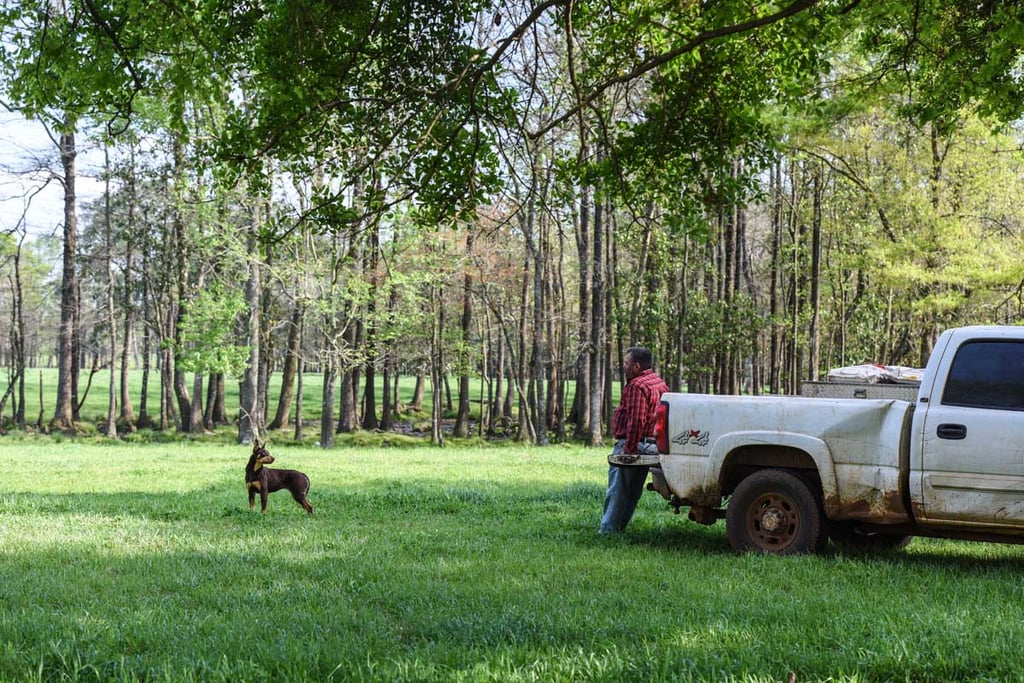
Herding our hoofstock is not an easy task. Our animals are raised on terrain ranging from brambled woodland to open pasture. We often need to sort and separate the herd into smaller groups based on factors such as age, gender, and genetics. We find our herding dogs indispensable in these complicated tasks, especially when moving our goats and sheep which are notoriously hard to work with. Dogs are an efficient, finessed, low-stress way to move large groups of livestock.
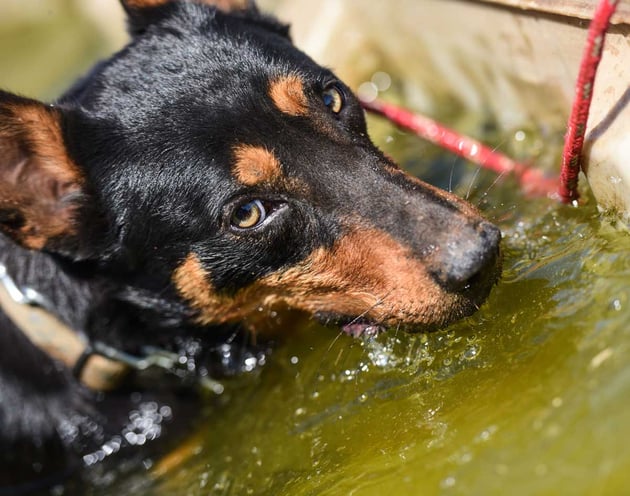
Our Small Ruminants Manager, Darren Wall, breeds Working Kelpies and uses his dogs to manage our herds. In addition to sorting and moving flocks, the dogs also help Darren perform daily checks on each herd. Darren instructs his dogs to slowly bring the herd towards him so he can inspect each sheep and goat to check their health. When the herd is up and moving, it is easier to assess the general health of the animals.
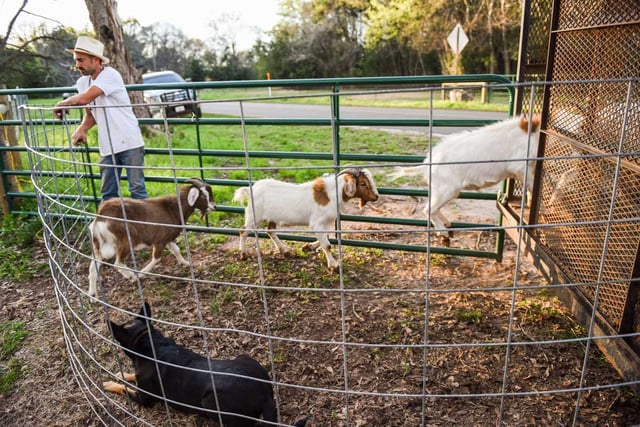
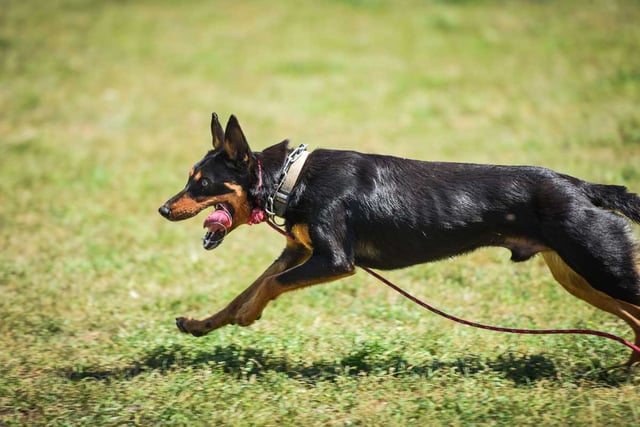
A young dog in training (Above).
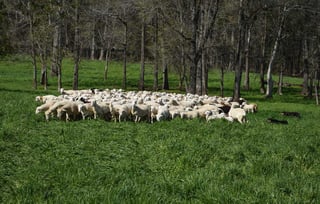
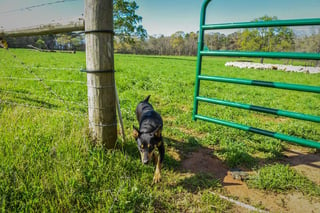
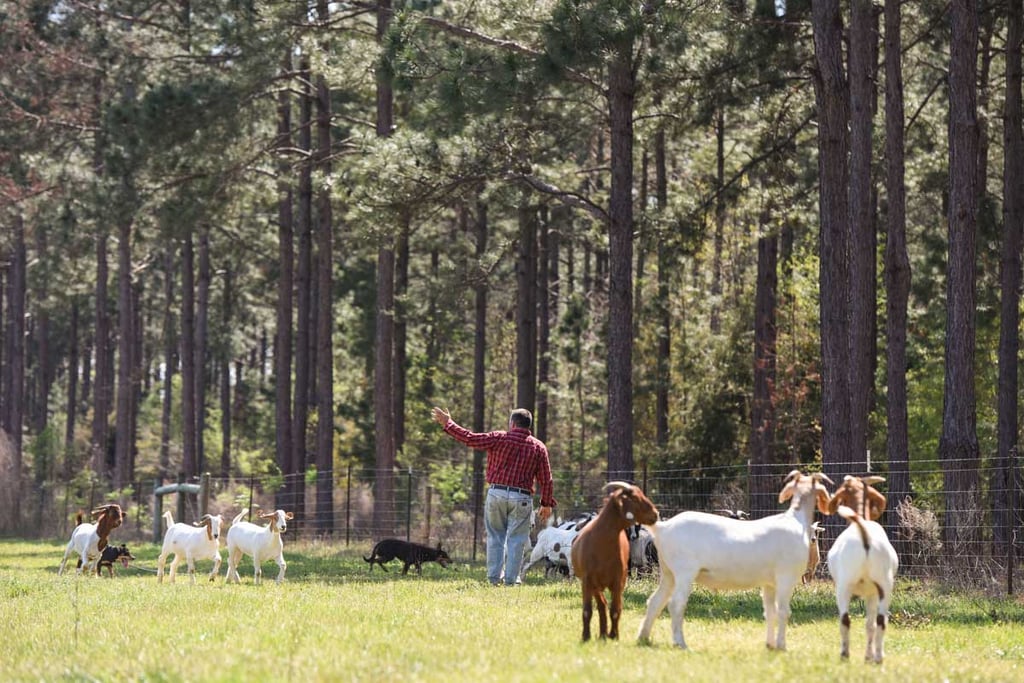 Darren trains a 5 month old pup with an older dog so it can learn the ropes (above).
Darren trains a 5 month old pup with an older dog so it can learn the ropes (above).
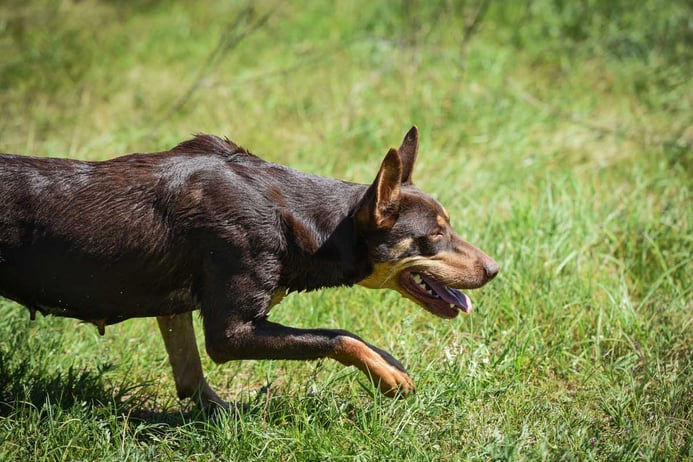
Humans have used dogs to herd livestock since the Ancient Egyptian and Roman times. Certain breeds of herding dog are better for cattle, some for sheep and goats, and some are universal herders. A dog’s herding techniques vary depending on the livestock they are bred to herd.
Not all pups are cut out for the working life. There is as much personality variation within a litter of puppies as across breeds. The shepherd must work with and foster the natural herding instincts in their pups and select the ones with the best work drive. For the dogs working at White Oak Pastures, the ability to gather and bring stock back to the shepherd is the ultimate skill set. The terms for these skills are “cast” (find the flock and run to the 12 o’clock position behind the flock), “lift” (gather the herd) and “rate” (bring the herd, all together, back to the shepherd at a slow pace).
Kelpies are an intelligent, high energy breed of herding dog developed in Australia. “Dogs don’t complain about the weather, the time of day, etc. What would take one, two or fifty people takes one dog”, Darren says. “A dog can be in 2 or 3 different places at one time”. Darren likes the durability of the Kelpie breed and says “Kelpies are relentless workers, their mentality is that no job is too much work. I can work cattle one day and chickens the next”. Kelpies are versitile and can work in a spectrum of settings. Herding dogs are especially helpful in situations with uneven ground, bramble or thickets. Once a dog is well trained, it is an impressive and indispensable tool. We are excited to incorporate herding dogs into our humane animal handling practices.

